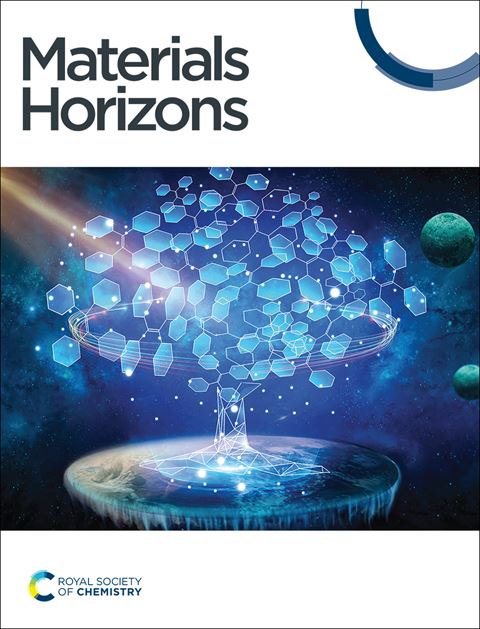去除氢气并将其储存起来:一种基于粘土的酸性电化学溶液。
IF 10.7
2区 材料科学
Q1 CHEMISTRY, MULTIDISCIPLINARY
引用次数: 0
摘要
从金属部件中提取氢可以为防止氢脆开辟一条新途径。为此,我们提出了一种电化学驱动的全固态氢控制方法,能够同时提取和储存氢。在这种方法中,我们在室温下使用粘土酸作为质子传导电解质。通过这种电化学处理,可从预充电钢中有效提取氢,从而恢复其拉伸性能并防止脆化。此外,经证实,萃取出的氢可在反电极上有效收集,从而证明了该工艺的显著优势。本文章由计算机程序翻译,如有差异,请以英文原文为准。

Remove hydrogen and store it too: an acid-in-clay based electro-chemical solution†
Extracting hydrogen from metallic components can open up a new pathway for preventing hydrogen embrittlement. To this end, we propose an electrochemically driven, all-solid method for hydrogen control, capable of both extracting and storing hydrogen simultaneously. In this approach, we employ acid-in-clay as a proton conducting electrolyte at room temperature. Through this electrochemical treatment, hydrogen is efficiently extracted from pre-charged steels, thereby restoring their tensile properties and preventing embrittlement. Moreover, it has been confirmed that the extracted hydrogen can be efficiently collected at the counter electrode, demonstrating the significant advantages of the process.
求助全文
通过发布文献求助,成功后即可免费获取论文全文。
去求助
来源期刊

Materials Horizons
CHEMISTRY, MULTIDISCIPLINARY-MATERIALS SCIENCE, MULTIDISCIPLINARY
CiteScore
18.90
自引率
2.30%
发文量
306
审稿时长
1.3 months
期刊介绍:
Materials Horizons is a leading journal in materials science that focuses on publishing exceptionally high-quality and innovative research. The journal prioritizes original research that introduces new concepts or ways of thinking, rather than solely reporting technological advancements. However, groundbreaking articles featuring record-breaking material performance may also be published. To be considered for publication, the work must be of significant interest to our community-spanning readership. Starting from 2021, all articles published in Materials Horizons will be indexed in MEDLINE©. The journal publishes various types of articles, including Communications, Reviews, Opinion pieces, Focus articles, and Comments. It serves as a core journal for researchers from academia, government, and industry across all areas of materials research. Materials Horizons is a Transformative Journal and compliant with Plan S. It has an impact factor of 13.3 and is indexed in MEDLINE.
 求助内容:
求助内容: 应助结果提醒方式:
应助结果提醒方式:


